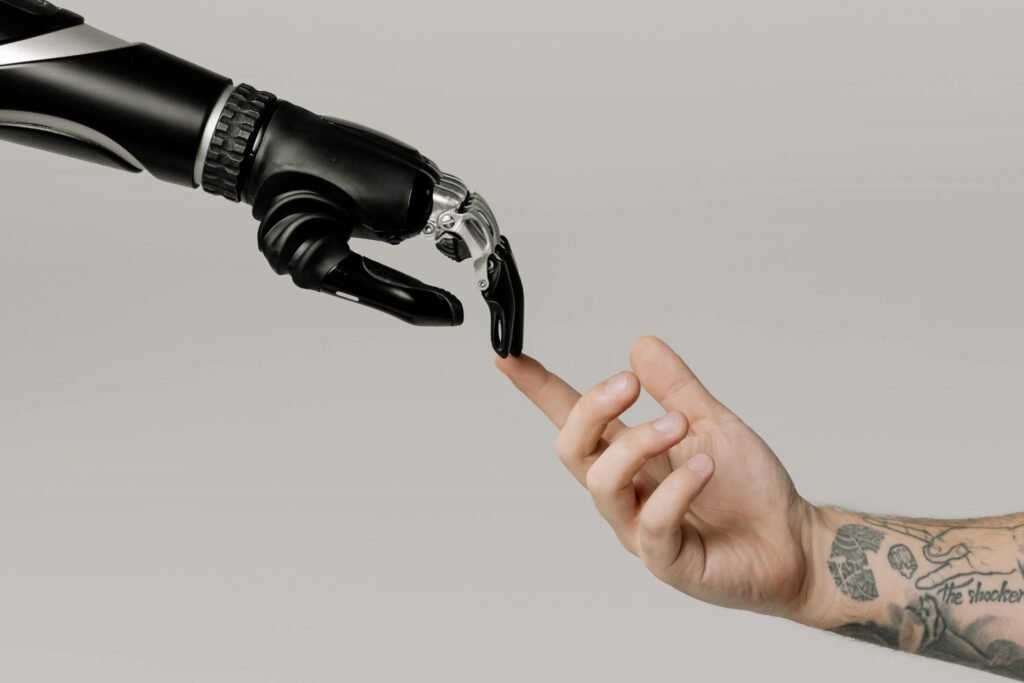AI is revolutionizing healthcare in various ways:
Diagnostic Assistance:
AI algorithms can analyze medical images such as X-rays, MRIs, and CT scans to detect abnormalities or assist in diagnosing diseases like cancer, tuberculosis, and diabetic retinopathy.
Personalized Treatment:
AI can analyze patient data and suggest personalized treatment plans based on factors like genetics, medical history, and lifestyle. This can optimize treatment effectiveness and reduce adverse effects.
Drug Discovery and Development:
AI accelerates the drug discovery process by analyzing vast amounts of biological data to identify potential drug candidates, predict their efficacy, and optimize their molecular structure.
Remote Monitoring and Predictive Analytics:
AI-powered devices and wearables can continuously monitor patients’ health parameters and detect early signs of deterioration, enabling timely interventions and reducing hospital readmissions.
Virtual Health Assistants:
AI-driven chatbots and virtual health assistants provide patients with personalized health advice, medication reminders, and symptom assessment, improving access to healthcare services and patient engagement.
Administrative Efficiency:
AI automates administrative tasks such as scheduling appointments, billing, and coding, reducing healthcare providers’ administrative burden and improving operational efficiency.
Clinical Research and Trials AI facilitates clinical research by analyzing patient data to identify suitable candidates for clinical trials, monitor trial progress, and analyze trial results more efficiently.
”Robotic Surgery”
Robotic surgery, also known as robot-assisted surgery, involves the use of robotic systems to assist surgeons in performing surgical procedures with enhanced precision, dexterity, and control. Here’s how it works and some of its key benefits:
How it Works:
Robotic System Setup:
The surgical robot consists of robotic arms equipped with surgical instruments and a high-definition camera. The surgeon sits at a console in the operating room, controlling the robotic arms and instruments with hand movements and foot pedals.
Visualization:
The robotic system provides a 3D, high-definition view of the surgical site, allowing the surgeon to see with greater clarity and depth compared to traditional laparoscopic surgery.
Instrument Control:
The surgeon manipulates the robotic arms using master controls at the console. The robotic arms mimic the surgeon’s hand movements but with improved precision and range of motion.
Real-time Feedback:
The system provides real-time feedback to the surgeon, including haptic feedback, which simulates the sense of touch, allowing the surgeon to feel the resistance and texture of tissues.
Benefits of Robotic Surgery
Enhanced Precision:
The robotic system’s precise movements and high-definition imaging enable surgeons to perform complex procedures with greater accuracy, leading to improved surgical outcomes and reduced risk of complications.
Minimally Invasive:
Robotic surgery is minimally invasive, involving small incisions instead of large ones required in traditional open surgery. This results in less blood loss, reduced postoperative pain, shorter hospital stays, and faster recovery for patients.
Improved Dexterity:
The robotic arms have a greater range of motion and can perform intricate maneuvers that may be challenging with traditional laparoscopic instruments, allowing surgeons to access hard-to-reach areas more easily.
Reduced Fatigue:
The ergonomic design of the robotic console reduces surgeon fatigue during lengthy procedures, leading to more consistent performance and better patient outcomes.
Telemedicine Capabilities:
Some robotic systems offer telemedicine capabilities, allowing surgeons to perform procedures remotely. This enables access to specialized surgical expertise in underserved areas and facilitates collaboration between surgeons across geographical distances.
Training Opportunities:
Robotic surgery platforms often include simulation modules that allow surgeons to practice procedures in a virtual environment before performing them on patients, enhancing training and skill development.
While robotic surgery offers many advantages, it’s important to note that it also has limitations and may not be suitable for all procedures or patients. Additionally, the cost of robotic systems and training can be significant barriers to adoption in some healthcare settings.
”Robotic knee replacement surgery”
Robotic knee replacement surgery, also known as robot-assisted knee replacement, is an advanced surgical technique that utilizes robotic technology to assist orthopedic surgeons during knee replacement procedures. This technology aims to enhance the precision and accuracy of the surgery, potentially leading to better outcomes and faster recovery times for patients.
During the procedure, the surgeon uses a robotic arm system that is equipped with cameras and sensors to create a 3D model of the patient’s knee joint. This model helps the surgeon plan and execute the surgery with a high level of precision. The robotic system provides real-time feedback to the surgeon, allowing for adjustments to be made as needed during the procedure.
One of the key advantages of robotic knee replacement surgery is its ability to customize the procedure to each patient’s unique anatomy. The robotic system can assist the surgeon in optimizing the placement and alignment of the implant components, which is critical for the long-term success of the surgery.
Additionally, robotic knee replacement surgery may result in less tissue damage, reduced blood loss, and a lower risk of complications compared to traditional knee replacement techniques. This can lead to shorter hospital stays and quicker recovery times for patients.
However, it’s important to note that robotic knee replacement surgery still requires the expertise of a skilled orthopedic surgeon. The robotic system is simply a tool that assists the surgeon during the procedure, and the success of the surgery ultimately depends on the surgeon’s skill and experience.
Overall, robotic knee replacement surgery represents a promising advancement in the field of orthopedic surgery, offering potential benefits for patients in terms of improved outcomes and recovery times.




